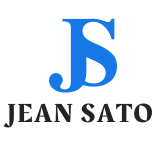Centuries of cultural legacy and artistic expression are embodied in the traditional Lithuanian weaving craft known as betėjas. This article illuminates the significance and ongoing appeal of bertėjas in Lithuanian culture by examining its history, methods, and cultural implications.
History of Bertėjas:
In ancient times, when it was crafted by expert artisans, betėjas has a rich history in Lithuania. Over the ages, the skill changed under the influence of several creative and cultural movements, but it never wavered from its fundamental foundations. Bertėjas was a method of artistic expression and cultural identity in addition to a way to make useful objects.
Techniques and Materials:
The components of bertėjas differ based on the intended result. To create a vast spectrum of colors, artisans may employ natural dyes in addition to a variety of fabrics, such as hemp, linen, and wool. Regional customs and individual creative tastes frequently impact the materials and methods chosen for bertėjas.
Significance of Bertėjas:
In Lithuanian culture, beretjas are quite important since they represent customs, artistry, and skill. It is frequently used to make a wide range of products, such as apparel, textiles for the home, and ceremonial objects, bringing beauty and cultural identity into daily life.
The Future of Bertėjas:
In the contemporary world, bertėjas still faces difficulties despite its lengthy history. There’s a chance that bertėjas will disappear as younger generations gravitate toward more contemporary art and design and traditional craftspeople become older. Nonetheless, groups and individuals are striving to maintain this trade by promoting bertėjas and making sure it survives for future generations.
Conclusion:
Bertėjas is a live representation of Lithuanian culture and artistic expression, not just a profession. Through an examination of the bertėjas’ background, methods, and significance, we are better able to appreciate this age-old art form and those who carry it on.











